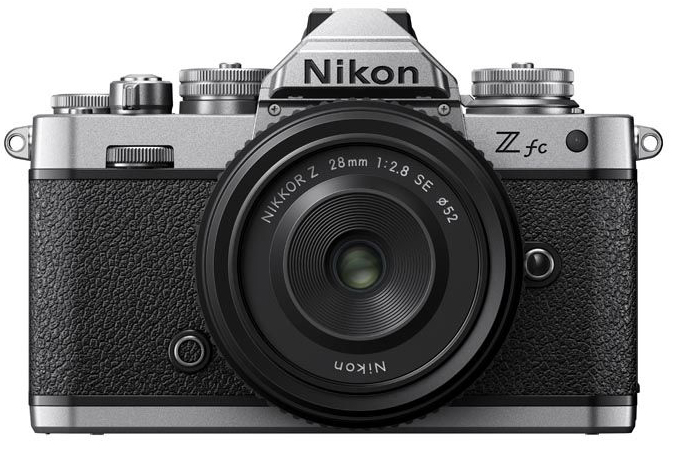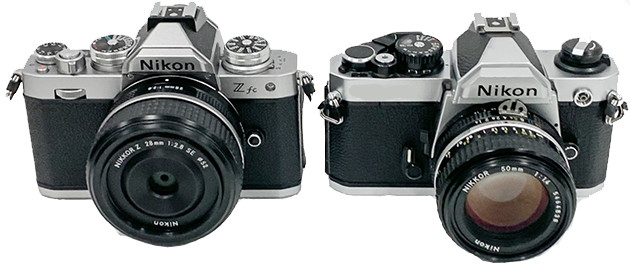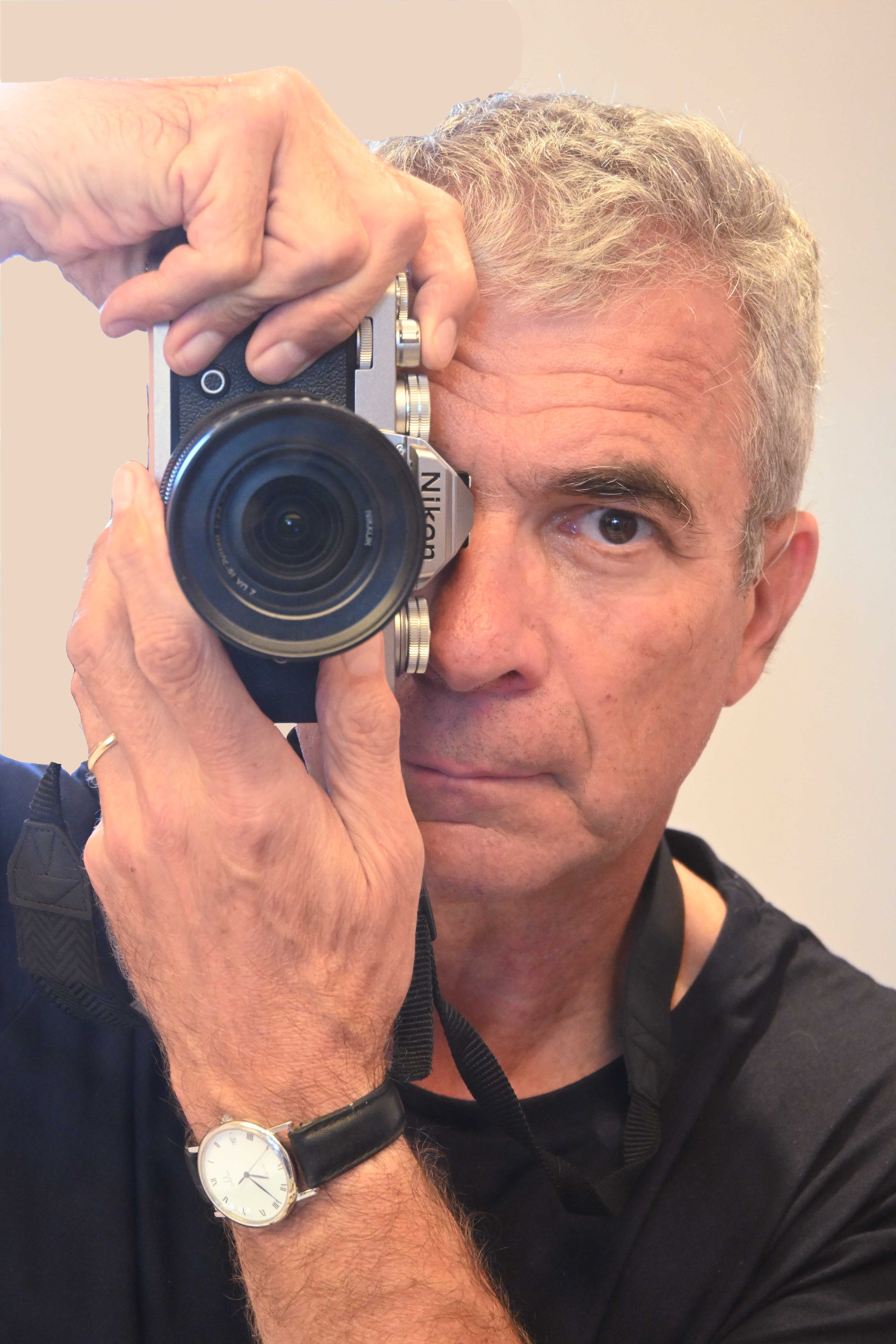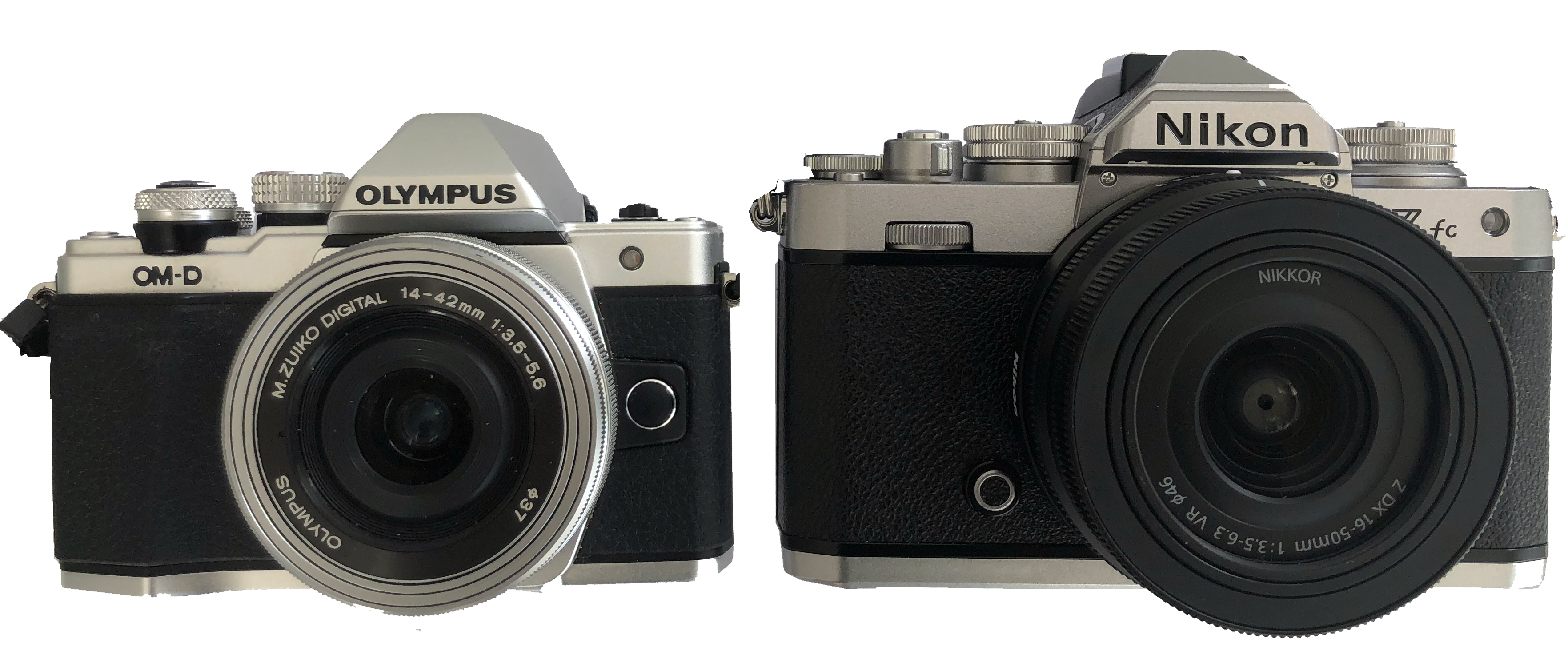
Olympus OM-D 10 Mark II and Nikon Zfc

Olympus OM-D 10 Mark II and Nikon Zfc
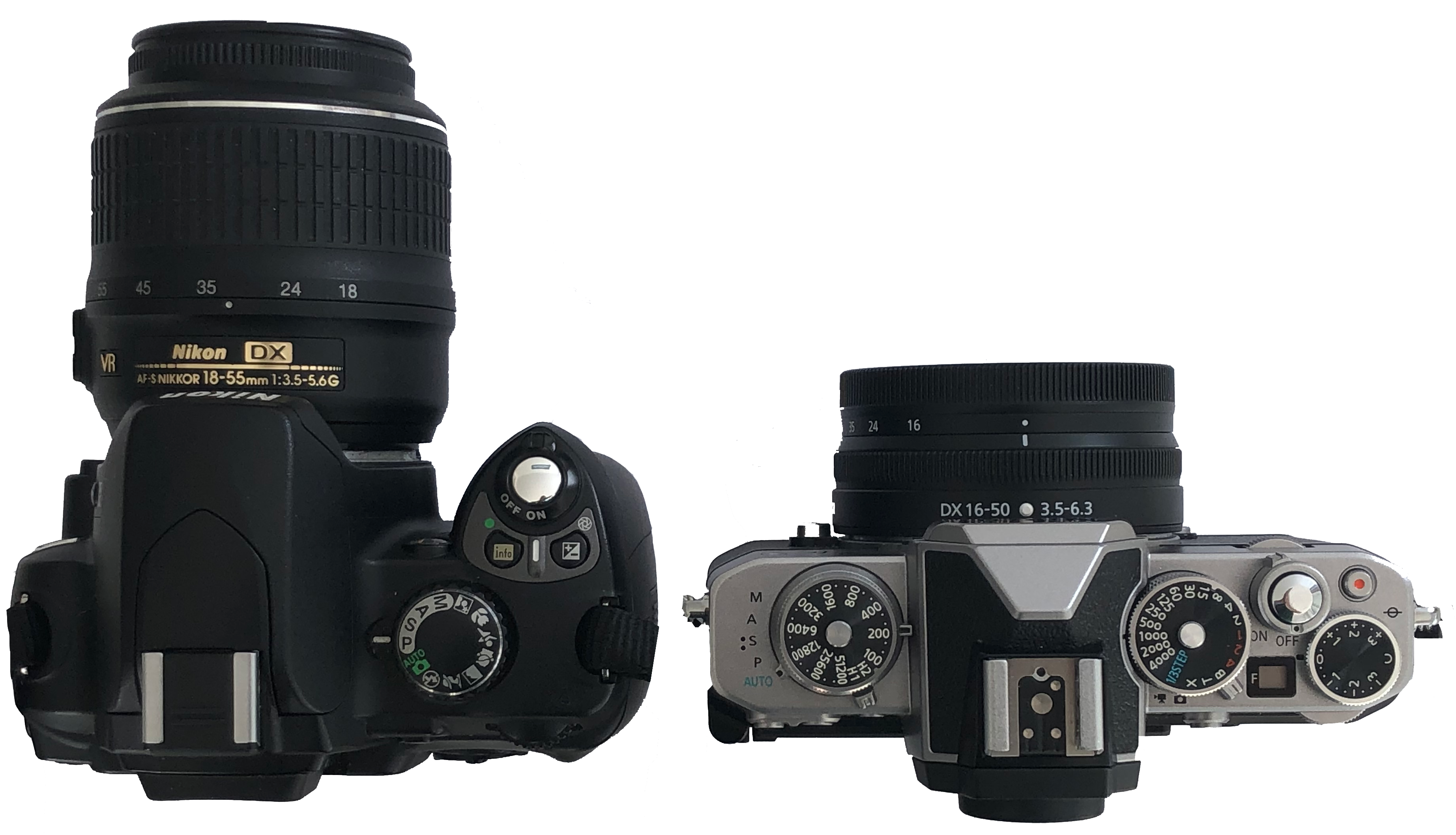
Nikon D40 and Zfc
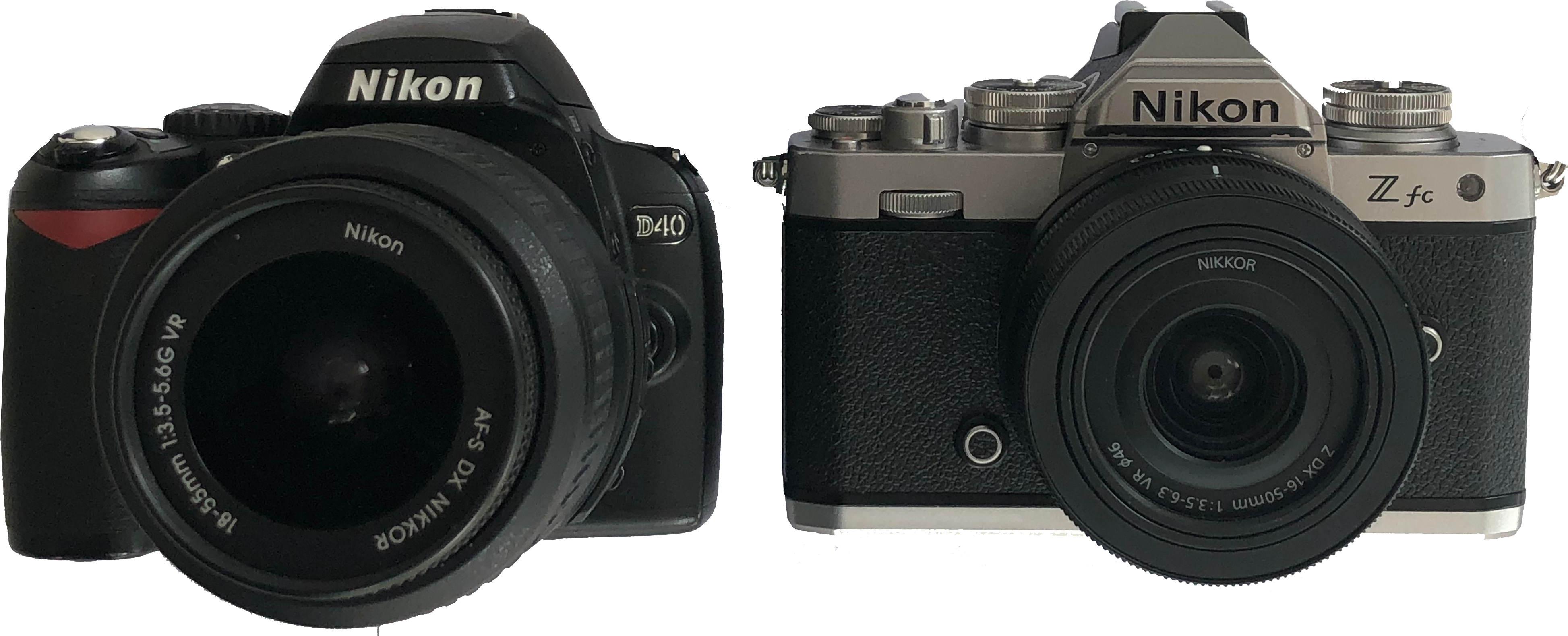
Nikon D40 and Zfc
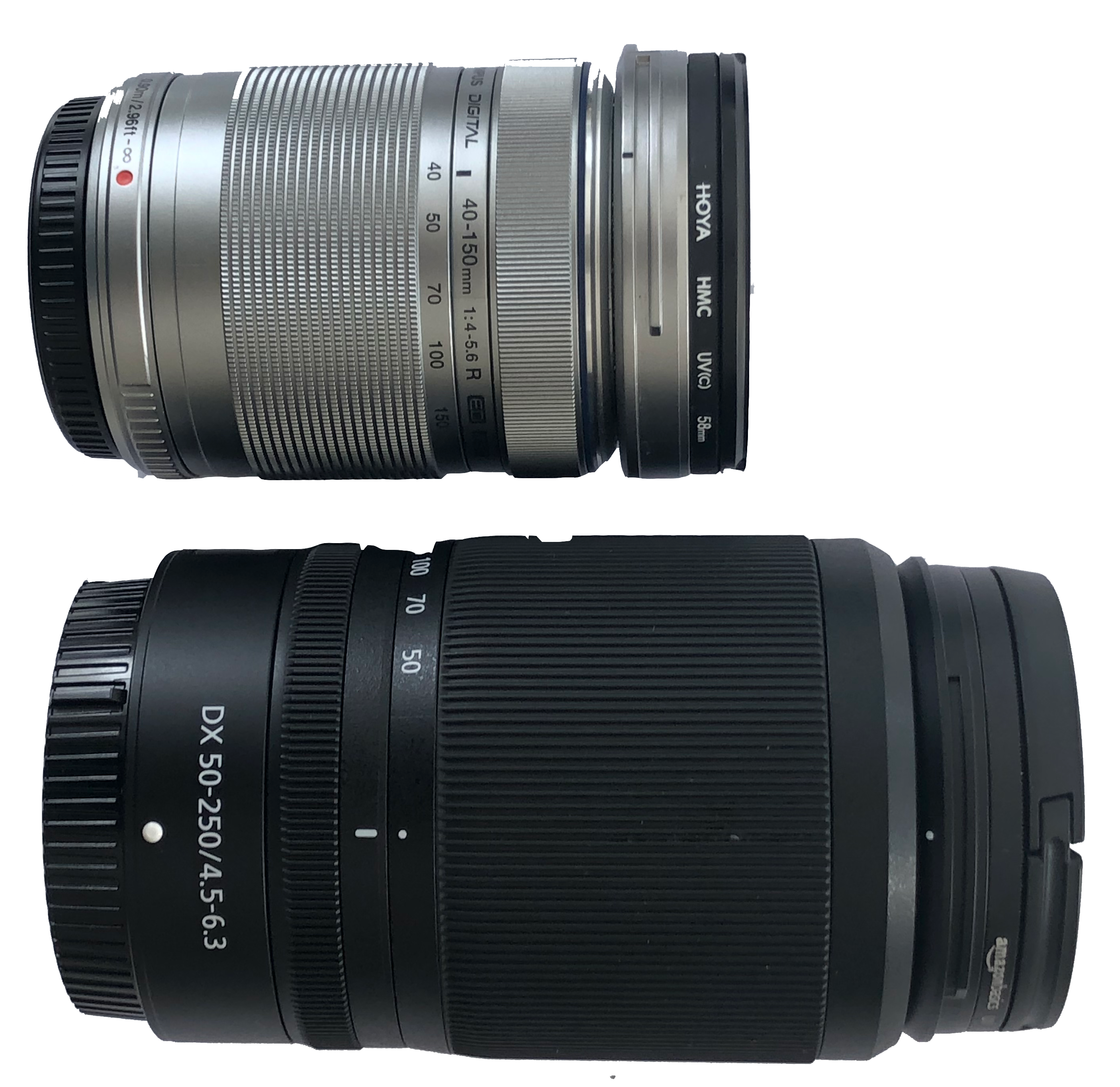
Olympus micro 4/3 and Nikon Z tele lenses
|
| Although the Z system is interesting, I did not see the point of paying for more expensive lenses than those available in F, not much smaller bodies and even if it means changing the system why not completely change the brand and take for example Sony's who have been in this niche for some time.
However, it was also clear to me that the brands Canon, Nikon and others will only be able to survive if they develop their range of hybrid systems which offer greater possibility of evolution and better margins and therefore at the same time give up, small little by little, mirror boxes and associated lenses.
Moreover, my wife having a small Olympus OM-D, I looked with a little envy at this system, inspired by OM 2, which is light, compact and very pleasant to use.
The Nikon DF did not convince me because it was too expensive with a slightly bastardized line and without any of the modern functions.
In terms of dimensions, precisely the small 16-50 mm zoom, although not very open, and very compact and very pleasant to use, we can see the difference here with an almost equivalent zoom at Olympus and on the Nikon D40. Note however that Z lenses are neither cheap nor very compact (see the comparison between the Olympus telephoto lens opposite and the 50-250 DX zoom).
In terms of use: I quickly found my marks and appreciated that the Zfc is both a concentrate of classicism with its aluminum knobs and that it has modern functions such as 4K video, the adjustable touch screen or being able to send photos directly to a smartphone via SnapBridge. this function which also exists on Olympus is very useful and I often use it to send pictures to my family. I liked being able to customize the different menus but I had to disable the FN key on the front panel because as soon as I picked up the device, I involuntarily pressed it with my fingers. Being able to shutter silently thanks to the electronic shutter as well as the touch screen are advantages for taking discreet photos. The connection is sufficient for my personal use. I could not buy a second EN-EL25 battery because it is out of stock but I transfer my images and I charge the Nikon Z FC directly via the USB C socket. It is very useful and I do not use the charger supplied with the device.
In terms of image quality I am satisfied although it is clear that the Nikon ZF cannot claim the quality of a Z7 or D850.
I bought an FTZ ring, to be able to use my "old" F lenses but I think with the 16-50mm, 50-250mm and 28mm SE lenses, I won't be using it.
The fact that the Nikon Zfc is APS-C and that the number of Z DX lenses is limited are ultimately not a constraint. I have a full frame Nikon D600 camera but its weight with lenses is quite prohibitive and other than for travel I use it relatively little.
In practice, I use the dials very little and I am often in auto or program mode. In fact the difference with the Z50 is not obvious and the Z50 with its modern ergonomics and its built-in flash is surely an excellent body ... but it does not have the look of the Zfc.
After a few weeks of use I do not regret my purchase at all because I find the device really beautiful and pleasant to handle even if the use of plastic is quite present, everything is very well finished and everything is very well integrated .
The real challenge for me is to know if I will use a reflex camera, hybrid or not, like the Nikon Zfc or if my smartphone will continue to take the majority of the photos. Despite the high price of some smartphones the quality of photos and now such that the value of an SLR or other camera is becoming more and more limited. The fact that the Nikon Z is a beautiful object, pleasant to handle, contributes to the pleasure of picking up and using it; a point that should not be overlooked at all.
I've added this first impression after three years below to indicate whether the novelty has worn off and whether I continue to use the Zfc, or whether it's just been left on the shelf.
The Nikon Zfc Three Years Later
Three years later, the results are mixed, but rather positive.
I often use the Nikon Zfc when I want to take better quality photos than the iPhone.
I took it on a trip to Japan in 2023, and I was very pleased with the photos taken with the small Nikon Z 16-50mm DX VR zoom and the Nikon Z 50-250mm DX VR zoom. The whole thing remains very compact and lightweight. It posed no constraints and allowed me to take some photos that would have been difficult or even impossible to take with a smartphone.
I also use the camera a lot for portraits.
In addition to these two lenses, I have the 28mm f2.8 SE and the FTZ adapter, which allows me to attach numerous F-mount lenses to my small camera. In practice, I rarely use them, but this saves me from buying Z lenses I don't really need or won't use.
Similarly, I have no desire or need to upgrade to a full-frame Nikon model because I know I would lose the compactness and lightness of the whole thing, which I now consider one of its primary qualities.
And what's more, the Nikon Zfc remains a beautiful object.
|
